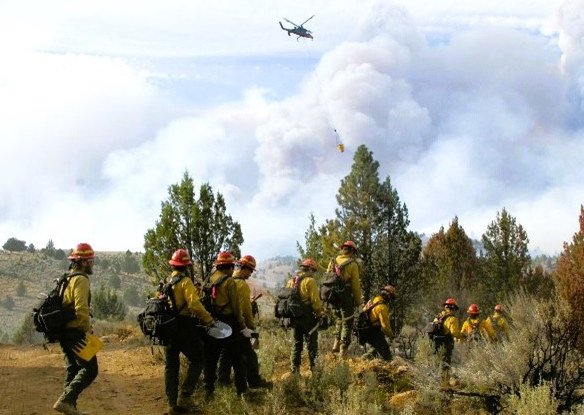75 days without wetting rains: Forest Service in NW reports highest level of wildfire response activated

PORTLAND, Ore. (KTVZ) -- Millions of acres of national forest lands across Oregon and Washington are continuing to see record-breaking dry timber conditions on both sides of the Cascades, the U.S. Forest Service said Tuesday.
These critical conditions are spurring rapid wildfire growth from recent lightning storms, including the July 16-17th storms which produced over 2,000 strikes in 48 hours.
How many days without rain?
Places like the Fremont-Winema and Deschutes national forests in Oregon have surpassed 75 days without wetting rains.
And 45 days without wetting rain is widespread across the Pacific Northwest from the Rogue River-Siskiyou area of far southern Oregon over to the Wallowa-Whitman range in the east and north into the Okanogan-Wenatchee country of central Washington.
“This is shaping up to be another monster fire year in the Pacific Northwest - and it’s just mid-July,” said Ed Hiatt, Pacific Northwest Assistant Fire Director for Operations. “We’re at the highest level of wildfire response possible, Preparedness Level 5, in the region and nation. Crews, dozers, helicopters, and incident management teams from across the nation are coming to help including folks from as far away as North Carolina and Wisconsin.”
With 14 large wildfires currently burning on national forests in the region, all 17 national forests are now in campfire restrictions to help prevent any human-caused wildfires. Annually, human-caused ignitions account for 75% of all wildfires in Oregon and Washington.
“We can’t prevent lightning, but we can prevent human starts,” added Hiatt. “We can also prepare our loved-ones for the grueling summer ahead with a smoke-ready home, a family ready-set-go evacuation plan, and defensible space.”
While temperatures are expected to slightly cool by the end of the week, a continued lack of moisture will keep forests and grasslands at or near critical fire conditions. Additionally, the low-pressure system bringing cooler temperatures is also forecasted to bring the potential of gusty winds through gaps and eastside of the Cascades, fanning any existing or new wildfires in the area.